Related Research Articles

Daejeon is South Korea's fifth-largest metropolis,with a population of 1.5 million as of 2019. Located in a lowland valley in the central region of South Korea,Daejeon serves as a hub of transportation for major rail and road routes,as well as for technology and administration sectors. The city is known for celebrating its natural environment,with most mountains,forests,hot springs,and rivers freely open for public use. Daejeon is approximately 50 minutes from the capital,Seoul,by KTX or SRT high speed rail.

Gangneung is a municipal city in the province of Gangwon-do,on the east coast of South Korea. It has a population of 213,658. Gangneung is the economic centre of the Yeongdong region of Gangwon-do. Gangneung has many tourist attractions,such as Jeongdongjin,a very popular area for watching the sun rise,and Gyeongpo Beach. There is an ROKAF airbase south of downtown Gangneung that formerly doubled as a civil airport.
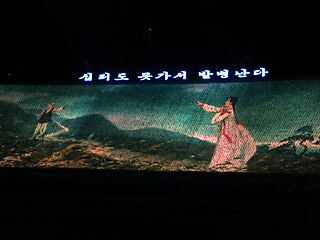
"Arirang" is a Korean folk song. There are about 3,600 variations of 60 different versions of the song,all of which include a refrain similar to,"Arirang,arirang,arariyo " It is estimated the song is more than 600 years old.

Pyeongchang is a county in the province of Gangwon-do,South Korea,located in the Taebaek Mountains region. It is home to several Buddhist temples,including Woljeongsa. It is about 180 km (110 mi) east southeast of Seoul,the capital of South Korea,and connected by expressways and high-speed passenger railways. Pyeongchang's slogan,"Happy 700 Pyeongchang",is taken from its average elevation of approximately 700 metres (2,300 ft).
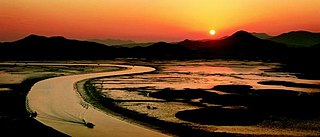
Suncheon (Suncheon-si) is a city in South Jeolla Province,South Korea. It is a scenic agricultural and industrial city of around 250,000 people near Suncheon Bay. It is located in the southeastern corner of Jeollanam-do,just over an hour south-east of Gwangju. Forty minutes south of Suncheon is the port city of Yeosu,and twenty minutes to the east of Suncheon is Gwangyang. It is currently experiencing strong development due to being included as part of the Gwangyang Bay Free Economic Zone,one of three newly created Free Economic Zones (FEZs) in South Korea due to open within the next decade. As of October 14,2007 plans are being set up and a referendum is being planned for a merging of the cities of Yeosu,Suncheon and Gwangyang into a new metropolitan city,taking advantage of the Gwangyang Bay Free Economic Zone,Yeosu's Expo 2012 bid and port facilities,Suncheon's educational institutes and Gwangyang's POSCO plant.
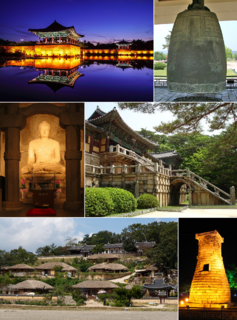
Gyeongju,historically known as Seorabeol,is a coastal city in the far southeastern corner of North Gyeongsang Province in South Korea. It is the second largest city by area in the province after Andong,covering 1,324 km2 (511 sq mi) with a population of 264,091 people Gyeongju is 370 km (230 mi) southeast of Seoul,and 55 km (34 mi) east of Daegu. The city borders Cheongdo and Yeongcheon to the west,Ulsan to the south and Pohang to the north,while to the east lies the coast of the Sea of Japan. Numerous low mountains—outliers of the Taebaek range—are scattered around the city.
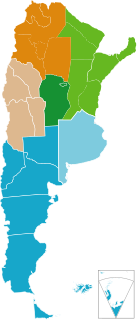
Argentina has a vast territory and a variety of climates and microclimates ranging from tundra and polar in the south to the tropical climate in the north,through a vast expanse of temperate climate. Natural wonders include the Aconcagua,the highest mountain in the world outside the Himalayas,the widest river and estuary of the planet,the IguazúFalls,the Humid Pampas,and the Argentine Sea. Visitors enjoy the culture,customs and Argentine cuisine.

The Gloucester Valley Battle Monument or Gloucester Memorial is a memorial in South Korea that commemorates the actions of the Gloucestershire Regiment and C Troop,170th Mortar Battery,Royal Artillery,of the British Army during the Battle of the Imjin River in 1951.

Icheon is a city in Gyeonggi Province,South Korea.

Yeoju is a city in Gyeonggi Province,South Korea. Yeoju was a county but was raised to the status of a city in September 2013. Together with the neighboring city of Icheon,it is known as a major center of contemporary South Korean ceramics,and hosts the World Ceramic Exposition every year. Other local products of note include rice,sweet potatoes,and yellow melons. Yeoju is the birthplace of Korea's last queen,Empress Myeongseong.

Ulleung County is a county in North Gyeongsang Province,South Korea.

Miryang,formerly also spelled as 推火郡,Milbeol (密伐) and Milseong (密城),is a city in Gyeongsangnam-do Province,South Korea. Its name is originated from the tribal country named Miri midong guk (彌離彌凍國). There are various hypotheses as to the meaning of Miryang,such as Milky Way,Galaxy,dragon's field,The Wheat Field and the watery field. Neighboring cities include Changnyeong to the west,Cheongdo to the north,Ulsan to the east,and Yangsan,Gimhae,and Changwon to the south. The city bird is the Korean magpie,the city tree is the pine,and the city flower is the royal azalea.
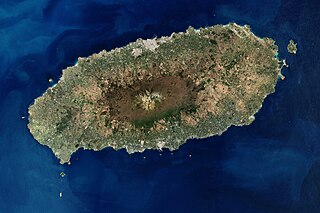
Jeju Island is the largest island in South Korea,located in Jeju Province. The island covers an area of 1,833.2 km2 (707.8 sq mi),which is 1.83 percent of the total area of South Korea. In 2020,the resident registration population is about 670,000,the largest among the islands in South Korea.

Tourism in South Korea refers to the tourist industry in the Republic of Korea. In 2012,11.1 million foreign tourists visited South Korea,making it the 20th most visited country in the world,and the 6th most visited in Asia. Most non-Korean tourists come from other parts of East Asia such as Japan,China,Taiwan,and Hong Kong. The recent popularity of Korean popular culture,often known as the "Korean Wave",in these countries has increased tourist arrivals. Seoul is the principal tourist destination for visitors;popular tourist destinations outside of Seoul include the major coastal city of Busan,the Seorak-san national park,the historic city of Gyeongju and subtropical Jeju Island. Traveling to North Korea is not normally possible without a special permission,but in recent years organized group tours have allowed groups of South Korean citizens to visit Mount Kumgang.

The Gochang,Hwasun and Ganghwa Dolmen Sites are the location of hundreds of stone dolmens which were used as grave markers,and for ritual purposes during the first millennium BCE when the Megalithic Culture was prominent on the Korean Peninsula. The sites were designated as a World Heritage Site by UNESCO in 2000. The Korean Peninsula is home to over 35,000 dolmens,accounting for approximately 40% of the world's total;the Gochang,Hwasun,and Ganghwa sites are themselves home to over 1,000 dolmens.
Hanam-eup is an eup,or large village,in Miryang,Gyeongsangnam-do,South Korea. It stands at the southern tip of Miryang,and looks across the Nakdong River at the northern tips of Gimhae and Changwon.
Miryang station is on South Korea's high-speed KTX railway network,55 km south of Dongdaegu Station. Miryang station is an important branch of the Gyeongbu and Gyeongjeon lines. The surrounding area is filled with numerous tourist attractions such as Ice Valley,Pyochungsa Temple,Pyochungbi,Jaejak Mountain and Unmun Mountain,as well as famous mountains called Yeongnam Alps. Especially in summer,there is a theater festival held in Miryang Theater Village and a cool ice valley without long clothes. It is a station that is the center of economy and tourism.
Ha Po-gyong was a Korean dancer who was designated an Important Intangible Cultural Asset. He was the sole master of the beombuchum and a recognised master of the obukchum or Five Drums Dance.
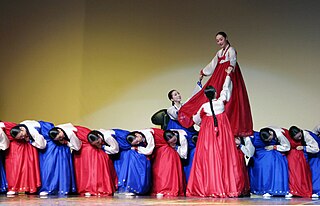
The heritage preservation system of South Korea is a multi-level program aiming to preserve and cultivate Korean cultural heritage. The program is administered by the Cultural Heritage Administration,and the legal framework is provided by the Cultural Heritage Protection Act of 1962,last updated in 2012. The program started in 1962 and has gradually been extended and upgraded since then.

Gongnyong Ridge is a mountain ridge in Seoraksan National Park,located in Gangwon Province,South Korea. It is the central ridge of Seoraksan,dividing it. The ridge earns its name due to the mountain peaks in the ridge looking as "vigorous and dynamic as a dinosaur rising from the ground". The Gongnyong Ridge was formed from the Jurassic-era granite of Seoraksan being shaped over the years due to tectonic shifts and erosion.
References
- "Ice valley of Nammyeong-ri, Miryang". Cultural Heritage Administration website. Retrieved 2006-09-16.
- "Tourism". SkyNews 135. 2005-07-30. Archived from the original on 2012-02-05. Retrieved 2006-09-16.